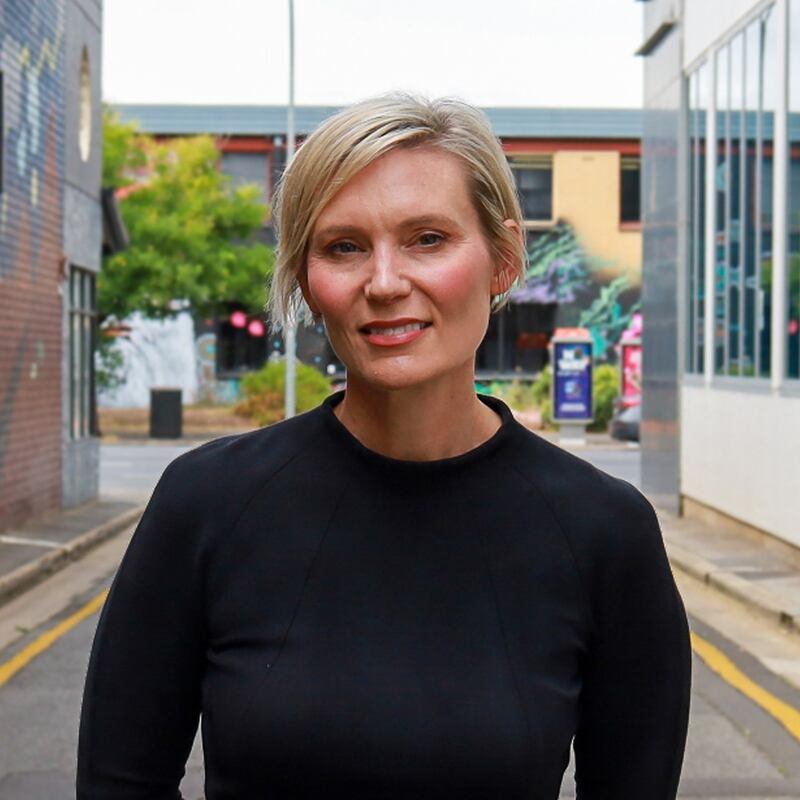More than 50 years ago Nobel laureate Herbert Simon coined the term ‘attention economy’, to explain how a wealth of information creates a poverty of attention.
In a world of proliferating media platforms, that’s something marketeers grapple with.
It’s also an area Australian academic Karen Nelson Field, founder of Amplified Intelligence, has made her own, with books such as The Attention Economy and How Media Works, which looks at human attention in relation to advertising.
Initially a consulting research company specialising in media effectiveness, Amplified Intelligence is now a leading software developer that helps the ad industry make informed commercial decisions.
READ MORE
Its human-centric attention metrics and products are used the world over and trusted by some of the world’s biggest brands, agencies and media owners. But it is not without its critics, she admits.
The definition of attention is when a human stops what they are doing and concentrates on one single thing, filtering out other things, in order learn something.
“But most people don’t realise there is a difference between definition and operationalisation. Where the industry is confused is around how do we operationalise that definition? And what sort of data basically measures that definition?” she asks.

It’s a confusion addressed head on in her latest book, The Attention Economy, a Category Blueprint. Designed for industry professionals, it tackles critical issues such as attention measurement, metrics, prediction, distraction, data quality and the ethical use of attention data.
For marketeers, attention is an additional lens through which to gauge success. Therein lies the interest – and the resistance. But do we really need a new currency, asks Winterlich?
It’s not that we need a new one, it’s that we need an accurate one, says Nelson Field, because how humans interact with media is not accounted for by ‘time in view’, the standard metric.
“Time in view is the single most critical input factor for measurement in media today, but it fails to account for distraction and therefore there are gaps in measurements,” she points out.
For example, in a 15-second ad, time in view solutions think you are paying attention, or engaging in some way, throughout. But the reality is that you are not. “It’s probably inactive attention – they’re looking, they’re not looking, then they’re out,” she explains. Time in view is too fuzzy a lens to capture that.
Amplified Intelligence’s tools, by contrast, use computer vision systems, collecting video footage and using it to build attention data that is far more accurate.
It’s not about its being a single, universal, one size fits all currency across the industry. Rather, attention metrics provide a layer of quality that overlays other measures, such as reach, she explains. “Ultimately reach is the core currency and the rest are supplementary around it.”
Not all attention is equal and for marketeers and media planners “the Holy Grail is full attention,” says Winterlich. But how important it is really, and, given the nature of our media consumption – where we’re trained to keep scrolling for example – is it even possible?
It’s an area Nelson Field has been looking at, developing what she calls an “attention flywheel” which shows how big brands can often “get away” with passive rather than full attention, simply because of their distinctive assets and how famous they are. After all, Tiffany’s distinctive blue livery can do a lot of heaving lifting at a glance, she points out.
Brands also have to train the next generation of category buyers, who haven’t tried you before. But sometimes the viewer doesn’t need to remember everything, she points out, they just need to be nudged.
“So there’s this constant flywheel which acts like a velocity from a brand growth perspective. There is a lot more evidence that it’s not just about getting more active attention, it’s about how much do you need, what your requirements are in terms of your campaign, and how do you supplement it with passive attention. It’s a lot more complicated than binary,” she says.
Her company has developed computer vision technology that allows it to intercept the camera on people’s mobile devices, desktops and TVs, as well as in the cinema or on outdoor advertising.
It sees first-hand how people interact with platforms such as Facebook, YouTube and TikTok, collecting billions of human data points and developing visual biometrics to figure out if they are looking actively or passively.
In attention, there is a law of diminishing returns depending on the size of the brand, and the opportunity in front of it.
“We consistently see that more attention meant greater outcomes. But there are points of diminishing returns, so it’s about planning for what you need,” she explains.
“The only rule of thumb I am really comfortable with is the concept of the ‘attention memory threshold’. That is, anything before two and a half seconds doesn’t really help with memory retention, and everything after it is more likely to add to memory retention from a long-term perspective,” she explains.
“After that, it just depends on the brand, on how hard they are trying to sell something, and on the price.”
Remember, “anyone that tells you that attention is always related to outcomes is lying to you, and probably trying to sell you something,” she cautions. “You could have 10 seconds of attention and still not have success. But this is not about the attention you earn, this is about the link to your brand, so this is where creative fits in.”
The basic advertising concept, she says, is no different from traditional reach. One might reach many people but fail to link the ad to your brand, and the campaign will be a failure.
“In that it’s no different from any other measure, such as reach, or CPM [cost per mile],” she says.
Indeed, traditional pricing models in programmatic advertising such as CPM, where you pay a certain amount for 1000 impressions, irks her, even as the industry moves towards a baseline, attention-adjusted CPM.
‘Cost per meaningless thousand’
She refers to CPM as “cost per meaningless 1000″. “When I was younger, CPM meant cost per thousand, and it doesn’t now. And what’s worse, the perceived value was that you would get 1000 people, and that is not happening any more because not all reach is equal, and impressions mean nothing,” she says.
“On top of that, in the digital space you are in a bidding system, which muddies the whole value of being equal anyway. So you’ve got this double whammy of impressions not being real and certainly not being equal. The perceived value is bid on, but it’s a false perceived value.”
Not for long. “I think CPM is the last thing we will clean up but it is coming, and I think it’s going to rock the whole bidding ecosystem,” she predicts.
Unsurprisingly, her views are anathema to the programmatic community but Nelson Field has ruffled feathers among creatives too. That’s because many have misunderstood her hierarchy of attention, she argues, in which she ranks creative at the bottom.
But her research shows that the most important factor defining how much attention your ad will get is the user experience of the platform. As consumers we are trained to consume social media in a particular way, “and you, as a creative, have to fit within that range,” she explains.
“The creative is the single biggest contribution to an outcome,” she adds, pointing out that her focus is on how much attention you can achieve, “whereas creative is about how many bottles of cordial you sell.”
While there is always a difference between the best and worst creative, “the difference between them is less than the difference between the same ad across different platforms,” she explains.
To hear more from podcast and content series Inside Marketing, click here














